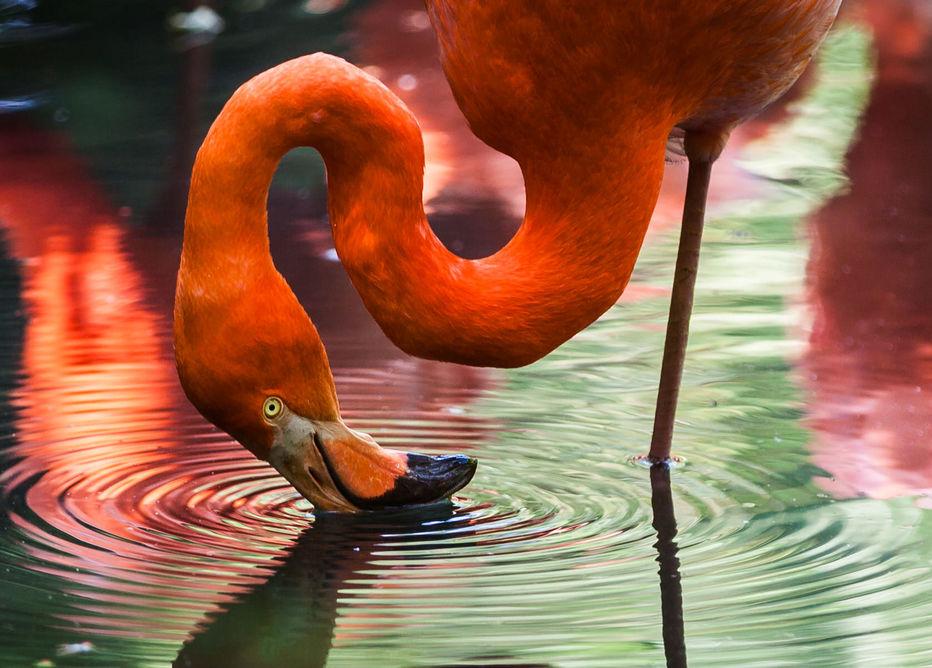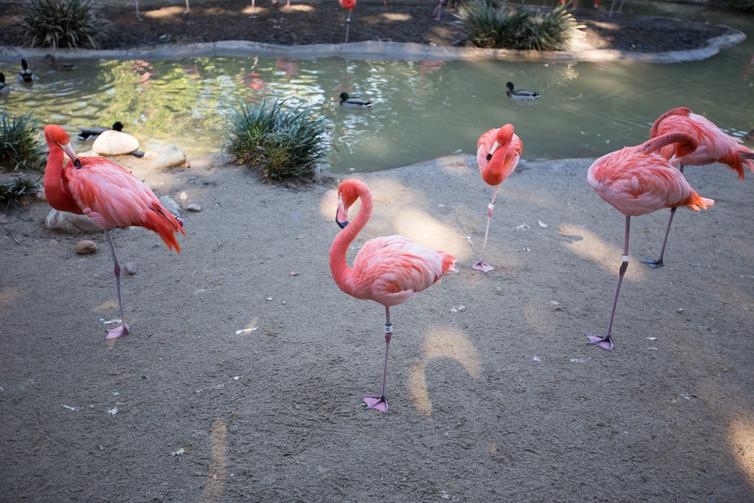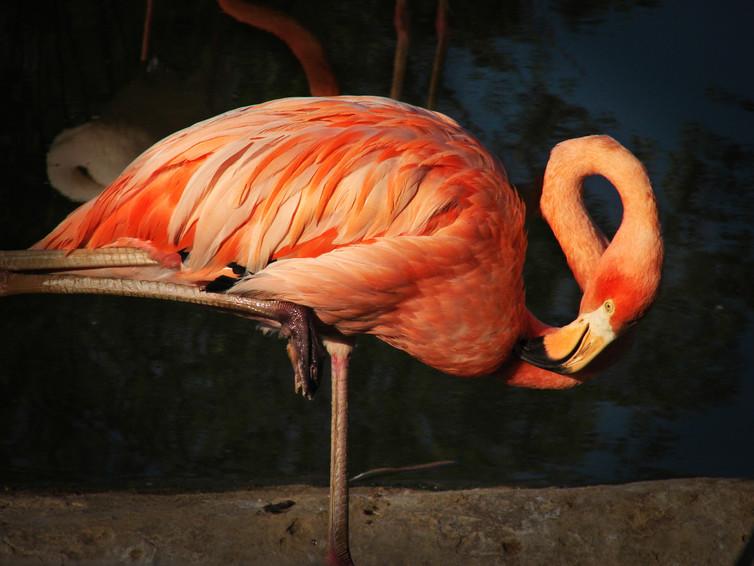Scientists balanced a dead flamingo on one leg to unlock the bird's standing secret
New research reveals how flamingos can stand – and even sleep – on one leg for so long

Your support helps us to tell the story
From reproductive rights to climate change to Big Tech, The Independent is on the ground when the story is developing. Whether it's investigating the financials of Elon Musk's pro-Trump PAC or producing our latest documentary, 'The A Word', which shines a light on the American women fighting for reproductive rights, we know how important it is to parse out the facts from the messaging.
At such a critical moment in US history, we need reporters on the ground. Your donation allows us to keep sending journalists to speak to both sides of the story.
The Independent is trusted by Americans across the entire political spectrum. And unlike many other quality news outlets, we choose not to lock Americans out of our reporting and analysis with paywalls. We believe quality journalism should be available to everyone, paid for by those who can afford it.
Your support makes all the difference.Flamingos can stand on one leg for far longer than humans can. They can even do it while asleep. Now scientists have shed some more light on just how these pink birds manage such a balancing act without getting tired.
The researchers from the Georgia Institute of Technology in the US focused on one of the main theories used to explain this behaviour, the muscle fatigue hypothesis. The more a muscle is used, the more likely it is to become tired and so most animals standing on one leg need to regularly switch. But flamingos can use one leg for much longer periods of time without needing to switch. So the theory is that the leg holding them up doesn’t get fatigued.
The two scientists wanted to test if it was possible for flamingos to remain stable on only one leg without the need for active muscular effort. To see if a flamingo could do this, they used a novel method involving two dead flamingos, obtained from a local zoo.
The researchers positioned the bodies on one leg using clamps and measured how well each cadaver could hold its body weight and maintain balance.
They also dissected the leg structures to see if muscle control was used when the birds were stood on one leg. And they collected information from living flamingos to see how much body sway was affected by how many legs the birds stood on.
They not only found that a flamingo could support its body weight passively (with no need for muscular activity) on one leg, but also that it was impossible for the bird to hold a stable, balanced position on two legs. They concluded that a flamingo standing on two legs uses more muscular energy to maintain a steady posture.

So why is a one-legged posture more efficient, and why does it use no active muscular movement? Apparently, it is down to the weight of the bird itself. When a flamingo is standing on one leg, its bodyweight forces the joints in its leg into a fixed arrangement. By moving the dead flamingo, the scientists noticed that there must be a group of muscles and ligaments that lock into place (known as a stay apparatus) in the proximal (near centre) part of the limb.
This stay apparatus resists certain types of movement and keeps the flamingo stable, without the need for it to use leg muscles to keep balanced. The efficient balancing action is only possible when the bird’s foot is placed directly below its body, the position the birds naturally adopt. This actually becomes even easier when the flamingo is asleep because it moves less and so there is less variation in the centre of pressure.

This is the first evidence of a passive, gravity-driven bodyweight support mechanism in a bird’s proximal leg joints. That means the bird supports itself without conscious effort because of the anatomy of the joints in its leg. What they cannot demonstrate is any other explanation as to why a sleeping, unipedal flamingo should benefit from being so stable and secure based on their behaviour. This requires further investigation.
For example, research has shown that birds can lose a significant amount of heat through their legs and this can help them maintain the right body temperature. Even more heat escapes if the birds are stood in water (as flamingos often are) and so being able to easily stand on one leg would help to reduce the amount of heat lost. This would be particularly beneficial for those flamingos who live in cold climates and areas where water temperature is close to, or below, freezing.
The heat loss theory is plausible and makes sense, but is probably supported by the muscular activity hypothesis, too.
What is clear is that flamingos, as familiar and fascinating as they are, still challenge our understanding of their physiology, biology and evolutionary history. Many birds stand on one leg but the flamingos’ balancing act may appear more noticeable because they are such strikingly shaped and coloured animals, which adds to their sense of being weird and wonderful.
So the debate about exactly why they stand on one leg is sure to continue well in to the future.
Paul Rose is an associate fellow at the Centre for Research in Animal Behaviour at the University of Exeter. This article was originally published on The Conversation (www.conversation.com)
Join our commenting forum
Join thought-provoking conversations, follow other Independent readers and see their replies
Comments